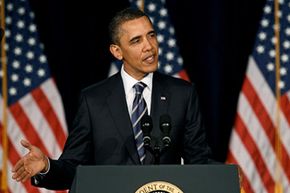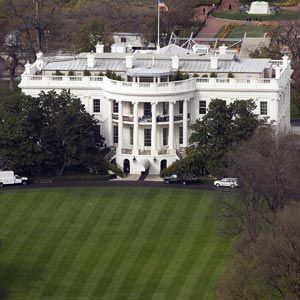On April 13, 2011, President Barack Obama proposed a "comprehensive, balanced deficit reduction framework" designed to rein in U.S. government spending, reduce the country's debt and strengthen its battered fiscal reputation. The proposal came amid myriad financial concerns, such as a $1.5 trillion budget deficit, heated debates about raising the U.S. debt ceiling and a Standard and Poor's warning about the U.S. credit rating -- not to mention the lingering effects of a recession.
The plan, known as The President's Framework for Shared Responsibility and Shared Fiscal Responsibility, seeks to ultimately reduce the federal deficit by $4 trillion dollars within 12 years. Under this plan, the nation's debt would represent 2.5 percent of its gross national product (GDP) -- the market value of all the goods and services a country produces -- by 2015, heading toward 2 percent by 2020. (The deficit as of April 2011 stood at about 11 percent of GDP, or a projected $1.5 trillion.)
Advertisement
To make sure that the nation's debt stays manageable under this plan, President Obama asked Congress to implement a "debt failsafe" by 2014 that will trigger reductions throughout the federal budget until the debt represents no more than 2.8 percent of GDP. Like similar measures enacted by past presidents, the trigger will not apply to entitlement programs like Social Security, Medicare or programs designed to help the poor. The plan doesn't just employ cutting costs to reduce the deficit; it also proposes a mix of tax reforms and interest savings. In fact, for every dollar in tax reform that helps cut the deficit, Obama's framework has three dollars in spending cuts and interest savings [source: White House].
This may seem like a bunch of math -- and it is -- but the framework is grounded in several common-sense principles. In addition to the general debt reduction plan, it calls for "shared sacrifice" from every American citizen, including the wealthy. Congress itself will get involved as well: Obama announced plans to ask Senate Majority Leader Harry Reid (D-NV), Speaker of the House John Boehner (R-OH), House Minority Leader Nancy Pelosi (D-CA) and Senate Minority Leader Mitch McConnell (R-KY) each to select four members from their ranks to participate in bipartisan and bicameral talks, led by Vice President Joe Biden, to build a legislative framework to reduce the deficit [source: White House].
All right, enough about the goal. How can the United States get there? Find out on the next page.
Advertisement


